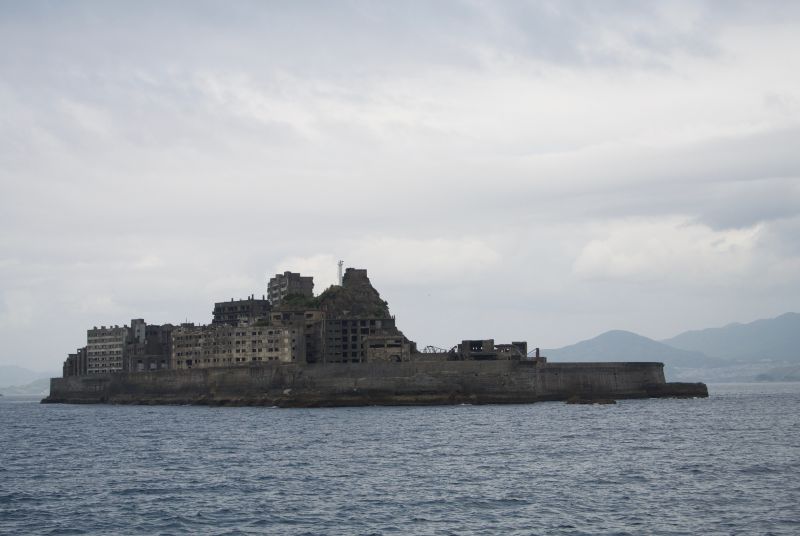
Battleship Island, as featured in the James Bond movie ‘Skyfall’
Gunkanjima (Battleship Island) is a remarkable place. It is located about 20 kilometres from Nagasaki, and the small island served as a coal mine from the late nineteenth century onwards. Amazingly at its peak it housed more than 5000 people on a piece of land just 480 meters long and 150 meters wide. It’s the highest population density recorded in human history!
The island’s proper name is Hashima, but its resemblance to a massive battleship prompted the popular nickname. The coal mine was closed as recently as 1972, after which the buildings were abandoned and left to rot. Such was its former significance, however, that the Hashima Coal Mine was formally registered in 2016 as a component part of ‘Japan’s Meiji Industrial Revolution’ World Heritage Site.
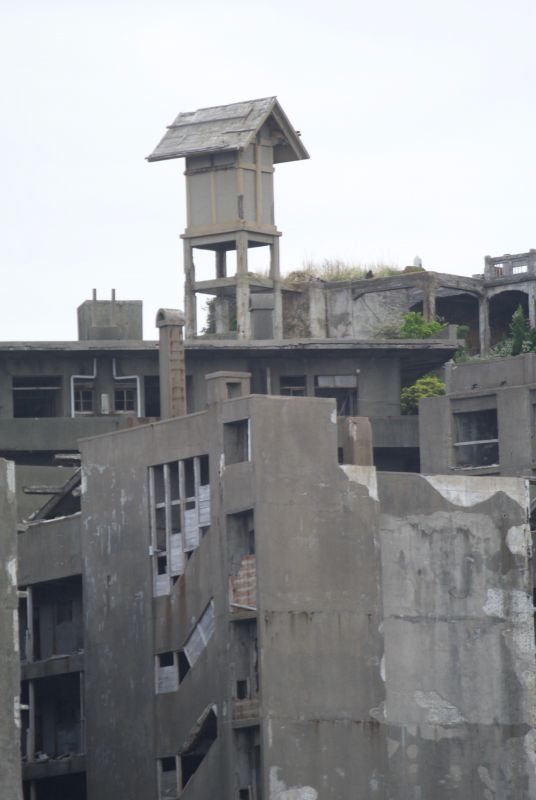
Gunkanjima’s Hashima Shrine
The island had schools, hospitals, shops, even pachinko but no trees. Land reclamation made the island larger, and the mine shaft extended some 1000 meters below sea level. Conditions were horrific, and during typhoons large waves crashed over the tall reinforced concrete apartment buildings.
Controversy attaches to the island’s history, since many of the workers were conscripted Korean and Chinese labourers. Despite the Korean government’s objections, no word of them is mentioned on trips to the island, or even in the brochures detailing the history and lifestyle of those who lived on the island.
Today Hashima Shrine is still visible, extending its spiritual authority over the abandoned island. Once there was a large Haiden (Worship Hall), but that has since collapsed. The miners worked in extremely dangerous conditions, and ‘Goanzen ni’ (be safe) was their common greeting. In such circumstances the presiding kami must have been dear to the hearts of those living close to death.
On April 3 each year the shrine’s Yamagami Festival was held, and it’s said the celebrations stretched from one end of the island to the other. Deserted and abandoned, the shrine now shares with more illustrious names the honour of being recognised as part of a World Heritage Site. It is a reminder of what a great comfort a shrine can be in times of adversity, and what solace Shinto can offer to those suffering from natural and manmade disasters.
*********
For an earlier post on World Heritage shrines, please see here.
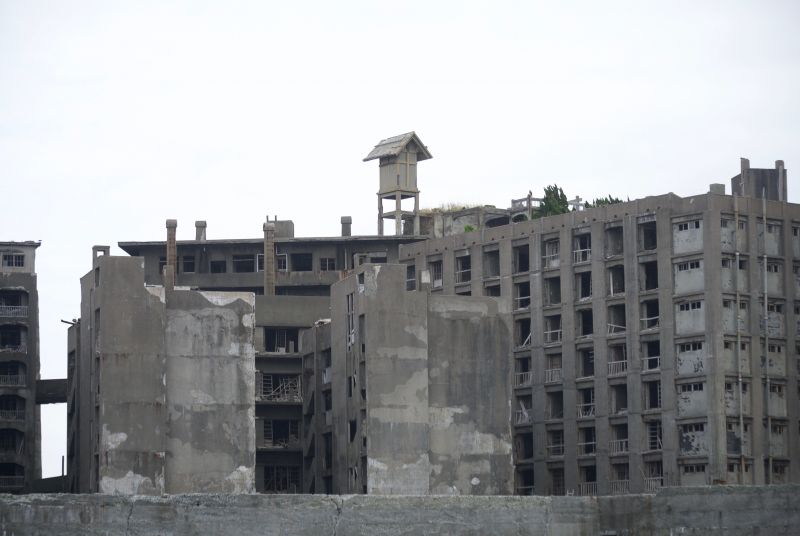
Hashima Shrine. The apartment rooftop was used by the crowded residents for growing vegetables and as outdoor space.
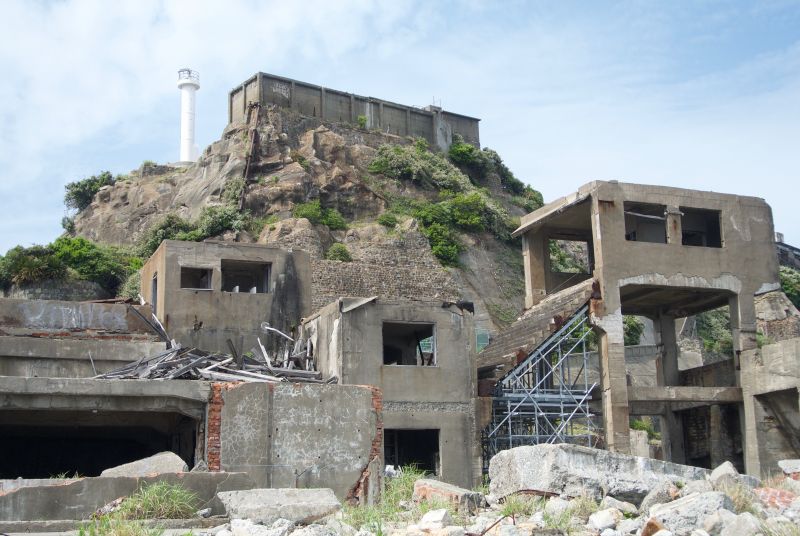
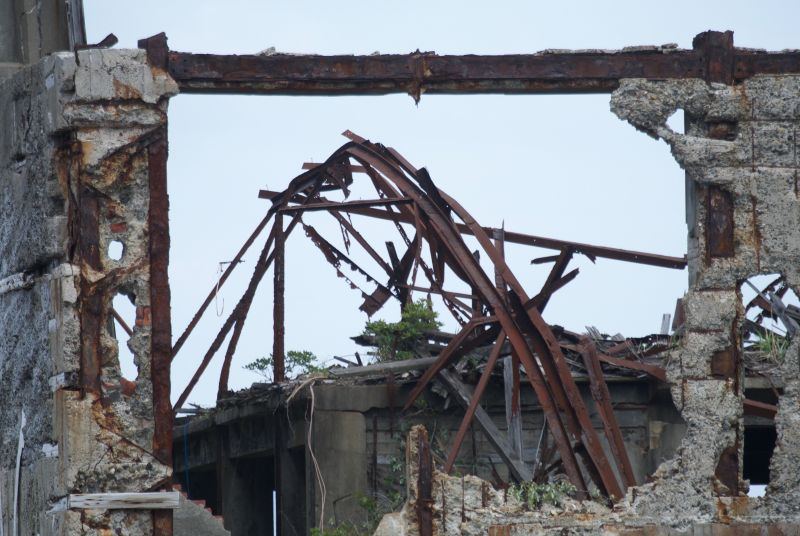
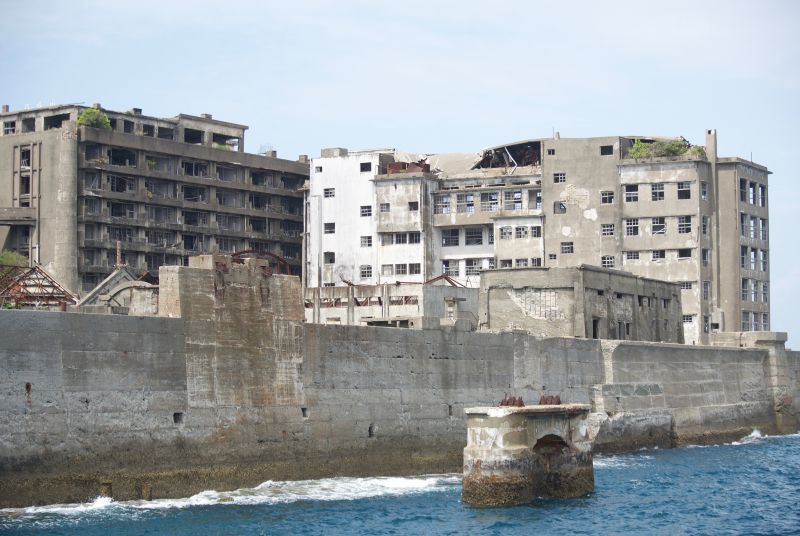
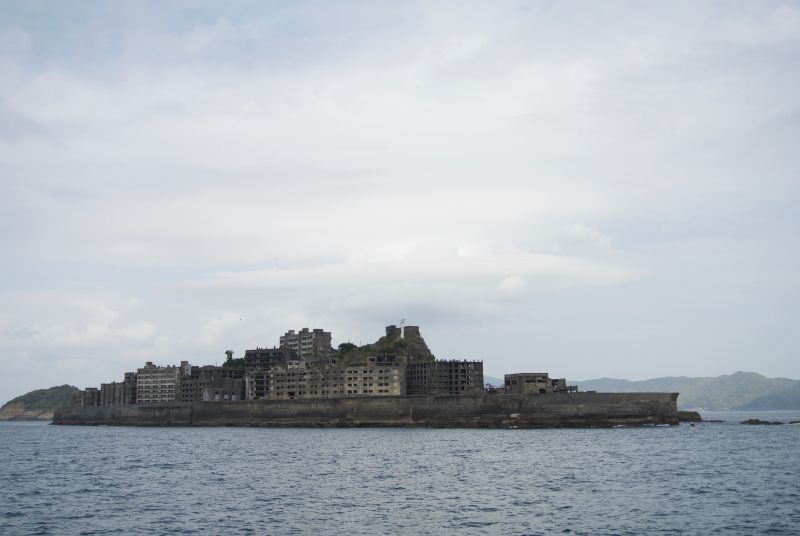
Battleship Island – Hashima Shrine is just visible towards the rear, sticking up towards the sky

Leave a Reply